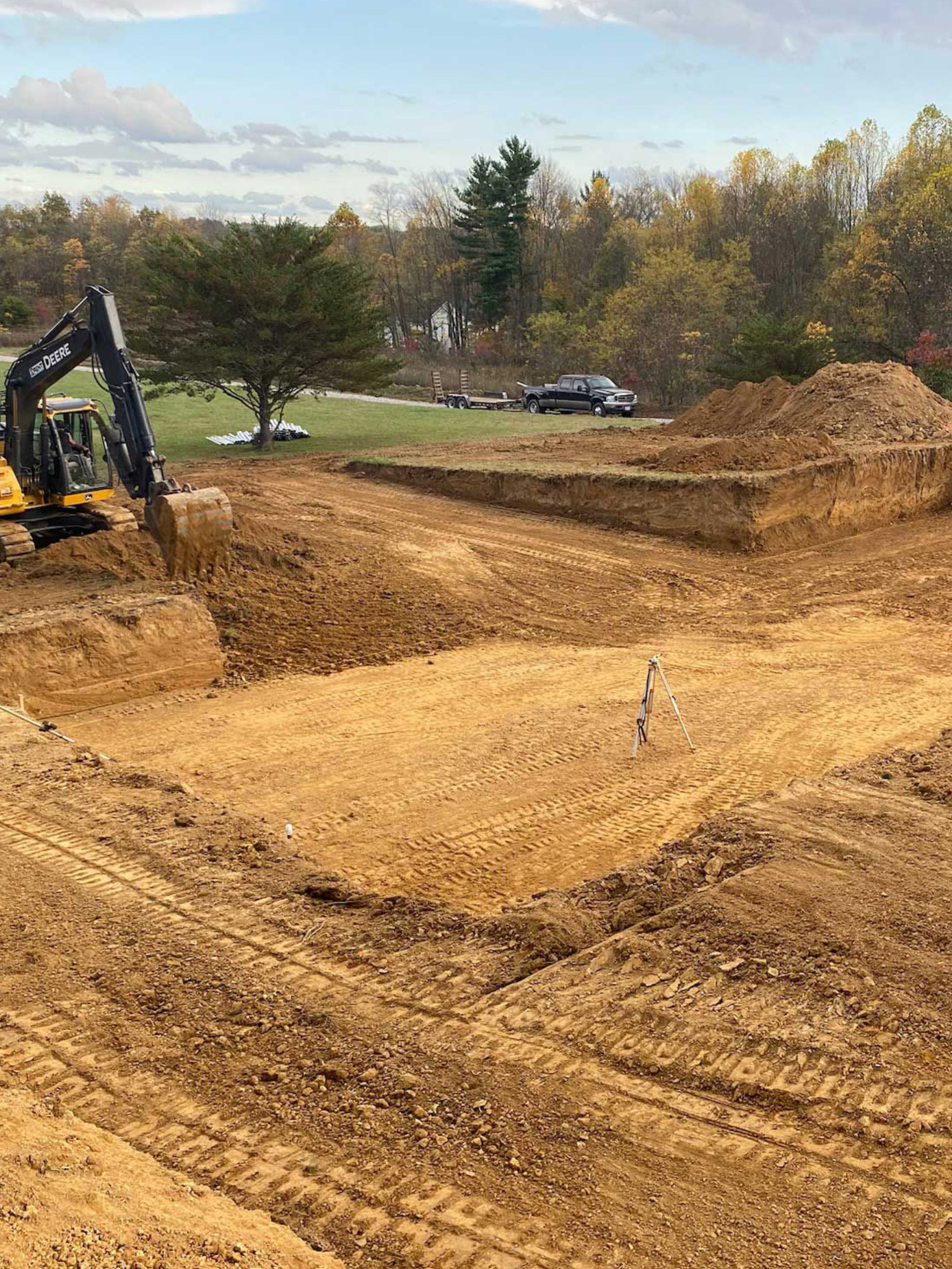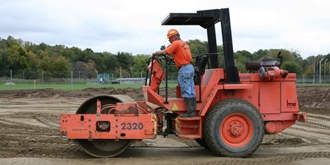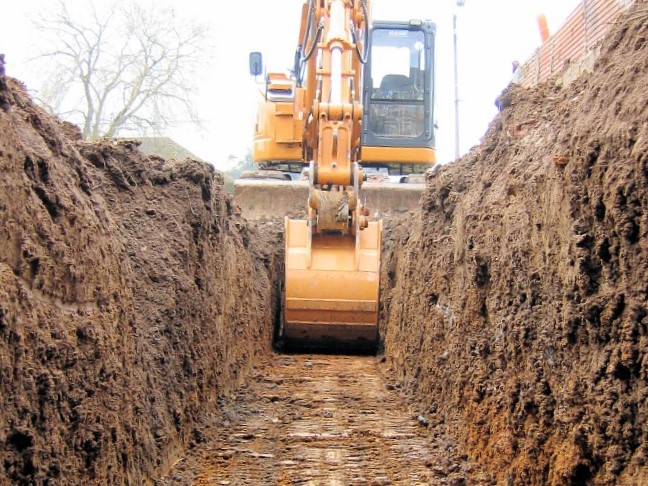Lancaster Trenching - Specialist Trenching Solutions in Lancaster, Ohio
Wiki Article
Extensive Expedition: The Science Behind Superior Excavation Practices
From ancient hand devices to modern-day hydraulic excavators, the advancement of excavation strategies has actually been a testament to human resourcefulness and technological developments. What really sets remarkable excavation techniques apart is a deep understanding of geological principles, paired with the usage of cutting-edge devices and techniques.Evolution of Excavation Methods
Throughout history, the evolution of excavation strategies has actually played a vital function ahead of time construction practices and historical discoveries. From the rudimentary devices utilized by our ancestors to the advanced machinery employed in modern times, the progression of excavation techniques has significantly changed exactly how we approach numerous projects.In ancient times, hands-on labor with standard devices such as wheelbarrows, shovels, and pickaxes was the key technique of excavation. This labor-intensive process limited the deepness and extent of excavations, commonly resulting in slow-moving progress and limited access to specific sites. As worlds progressed, so did the devices and techniques used for excavation.
The Industrial Revolution marked a turning point in excavation methods with the intro of steam-powered equipment. In modern times, technology plays a pivotal role in excavation, with improvements like GPS systems, drones, and 3D scanning improving precision and efficiency in the area.
Duty of Modern Technology in Excavation

The integration of innovative technology has essentially changed the area of excavation, enhancing accuracy and efficiency to unmatched levels - excavating ohio. One of the vital technological improvements that has actually substantially affected excavation techniques is the utilization of GPS systems.
Additionally, the advent of 3D modeling and simulation software application has streamlined the preparation process for excavation jobs. Designers and operators can currently visualize the whole excavation procedure before breaking ground, recognizing potential difficulties and maximizing workflow. Together with this, the execution of drones in excavation activities has assisted in aerial studies, volumetric dimensions, and website evaluations with unrivaled rate and precision.
Geological Concepts in Excavation
An understanding of geological principles is important for making sure the architectural honesty and stability of excavation sites. Geological elements play an important duty in determining the expediency and safety and security of excavation tasks (septic ohio). One vital geological concept to take into consideration is the kind of dirt or rock existing at the website. Various soil types, such as gravel, sand, or clay, have varying levels of stability and require different excavation strategies. Natural dirts like clay may call for additional assistance to stop collapses, while sandy dirts might be prone to erosion during excavation.Additionally, the geological structure of the location, consisting of faults, cracks, and rock formations, must be meticulously analyzed to determine potential threats and obstacles. Excavating near mistake lines or unstable rock formations can bring about instability and prospective risks. By performing detailed geological surveys and evaluation, excavators and engineers can create approaches to alleviate dangers and ensure the effective completion of excavation jobs. Inevitably, integrating geological concepts right into excavation practices is vital for achieving risk-free, reliable, and sustainable outcomes.

Newest Tools for Excavation
In the realm of excavation methods, contemporary advancements in tools have transformed the efficiency and precision of excavation processes. One of the most recent tools making waves in the industry is using drones geared up with advanced imaging technology. These drones can provide detailed airborne studies of excavation websites, offering real-time information on topography and potential dangers. This details help in much better planning and decision-making during the More Help excavation procedure.One more cutting-edge tool gaining appeal is the application of 3D printing technology for producing custom-made excavation equipment. This enables the manufacturing of specialized devices that are tailored to the details demands of a project, boosting effectiveness and lowering downtime.
Moreover, advancements in materials scientific research why not try here have led to the development of stronger and more resilient excavation devices. excavating ohio. Tungsten carbide-tipped excavator attachments, for example, deal exceptional efficiency in difficult ground problems, enhancing efficiency on-site
Scientific research's Effect on Excavation Practices

In addition, advancements in products scientific research have led to the production of more powerful, much more durable excavation devices and tools. For instance, the usage of composite products in miners and shovels has enhanced their efficiency and durability, ultimately boosting productivity on excavation websites. In addition, scientific study on soil technicians and geotechnical engineering has actually given useful insights into dirt habits, permitting excavation experts to make enlightened decisions relating to excavation approaches and soil stablizing strategies. Generally, scientific research continues to drive technology and improvement in excavation practices, making excavation jobs a lot more effective, affordable, and lasting.

Final Thought
Finally, the development Recommended Reading of excavation techniques has been greatly affected by innovations in innovation and a deeper understanding of geological principles. The most up to date tools and tools utilized in excavation have improved performance and accuracy in the field. The application of clinical knowledge has significantly improved excavation methods, resulting in more lasting and efficient methods for digging deep into different sorts of products.In the world of excavation techniques, modern advancements in devices have transformed the effectiveness and precision of excavation processes. By leveraging clinical concepts, the excavation industry has actually been able to significantly boost performance, precision, and safety in excavation processes. GPR allows excavation groups to non-invasively check and map subsurface structures, energies, and possible threats, allowing them to plan excavation projects with better precision and decreased risk of crashes.
In addition, scientific research on soil mechanics and geotechnical design has actually offered useful insights into soil habits, allowing excavation professionals to make enlightened decisions regarding excavation techniques and soil stabilization strategies. Generally, science proceeds to drive development and improvement in excavation methods, making excavation projects much more efficient, cost-efficient, and sustainable.
Report this wiki page